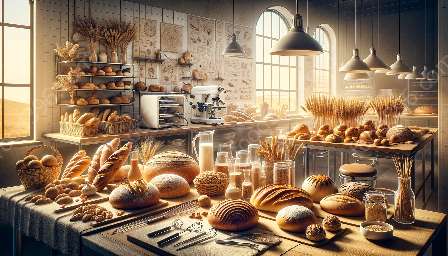Challah bread is a traditional Jewish bread that is not only delicious but also has a rich cultural significance. Known for its distinctive braided shape and slightly sweet taste, challah bread is a staple at holiday and Shabbat meals, and it holds a special place in Jewish tradition.
When it comes to types of bread and their characteristics, challah stands out for its soft, tender crumb and its beautiful braided appearance. Baking challah bread can be seen as a delightful marriage of tradition and baking science, as mastering the techniques behind this bread requires an understanding of the chemical and physical processes at play during its creation.
The Irresistible Charm of Challah Bread
Challah bread is characterized by its rich history and cultural significance. It is a staple in Jewish cuisine, often served on holidays and during Shabbat, the Jewish Sabbath. Traditionally, challah is made with eggs, which give it a soft and slightly sweet flavor. The bread's braided shape, which often comes in various designs, adds to its visual appeal. The texture of challah is unique, with a tender crumb that makes it perfect for sandwiches, French toast, or simply enjoyed on its own.
Types of Bread and Their Characteristics: Understanding Challah
Understanding the characteristics of challah bread requires exploring the broader context of types of bread and their unique attributes. Challah falls into the category of enriched bread, which distinguishes it from lean bread. Enriched bread, as the name suggests, is made with added ingredients such as eggs, butter, or milk, giving it a richer taste and tender texture. This sets challah apart from leaner bread varieties like baguettes or sourdough, which rely solely on the basic ingredients of flour, water, salt, and yeast.
Challah bread's unique characteristics are also evident in its braided shape and golden crust. The braiding of the dough not only serves a decorative purpose but also influences the bread's texture, creating a soft and pillowy interior when baked. The glossy, golden crust of challah bread adds a delightful contrast to its tender crumb, making each bite a sensory delight.
The Science and Technology of Baking Challah
Baking challah bread is not just an art; it also involves a deep understanding of the science and technology behind the process. Like all bread baking, challah's creation relies on the principles of fermentation and gluten development. The addition of eggs, in particular, contributes to the bread's complex flavor and soft texture, impacting the overall structure of the dough.
Furthermore, the braiding technique used to shape challah bread plays a crucial role in its final texture. As the dough is braided, layers are formed, creating a structure that incorporates air and allows for a more open crumb. This technique, combined with the right balance of ingredients and proper proofing, leads to the characteristic lightness and softness of challah bread.
The Tradition of Challah Bread
Challah bread is more than just a type of bread; it represents a time-honored tradition that has been passed down through generations. The act of making and sharing challah holds deep cultural significance, symbolizing unity, abundance, and the sanctity of the Sabbath. The braided shape of challah bread is also symbolic, representing love and unity within the community.
Whether it's enjoyed at a festive meal or during a quiet moment of reflection, challah bread brings people together and serves as a reminder of tradition, history, and the joy of sharing a meal with loved ones.

